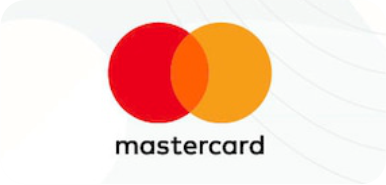Fibonacci retracement is one of the most powerful tools used in technical analysis to identify potential support and resistance levels in financial markets. Traders and investors apply these levels to analyze price movements and predict possible reversal points.
If you are still wondering how this works, this article will provide you with a piece of complete information. You will learn about Fibonacci retracement levels, how to calculate them, how traders use them in financial markets, and why they are so important in technical analysis.
What is a Fibonacci Retracement in Trading?
Fibonacci retracement also called “Fib retracement” is a technical analysis tool that helps traders identify key levels where prices might retrace before continuing their original trend. These retracement levels are derived from the Fibonacci sequence, a mathematical pattern that appears in nature, art, and financial markets.
This great tool is widely used in forex trading, stock trading, and cryptocurrency markets. It helps traders determine entry points, stop-loss levels, and profit targets. The key retracement levels used in trading are 23.6%, 38.2%, 50%, 61.8%, and 78.6%.
When a price moves in one direction and then starts retracing, traders use these levels to predict where it might reverse and continue its trend.
The Mathematics Behind Fibonacci Retracement
If you truly want to understand Fibonacci retracement, you need to know about the Fibonacci sequence. This sequence is a series of numbers where each number is the sum of the two preceding ones:
0, 1, 1, 2, 3, 5, 8, 13, 21, 34, 55, 89, and so on.
These levels are derived from the ratios found within this sequence. They act as psychological price points where traders expect the price to either pause or reverse. The most known Fib retracement are:
- 23.6% – Found by dividing a number in the sequence by the number three places to the right.
- 38.2% – Found by dividing a number by the number two places to the right.
- 50% – Though not an official Fibonacci number, traders widely use it as a psychological level.
- 61.8% – Known as the “Golden Ratio,” this is the most significant Fibonacci level in trading. It is derived by dividing one number in the sequence by the number immediately following it.
- 78.6% – Found by taking the square root of 61.8%.
How to Draw Fibonacci Retracement on a Chart
If you want to use Fib retracement effectively, you must know how to apply it to a price chart. To get this done, take a look at this guide to drawing Fibonacci retracement lines:
1. Identify a Strong Price Movement
- Look for a strong upward or downward trend.
- The Fibonacci retracement tool works best when a price makes a significant move in one direction.
2. Select the Fibonacci Retracement Tool
- In platforms like TradingView or MetaTrader, find the Fibonacci retracement tool in the drawing section.
3. Mark the Swing High and Swing Low
- If the trend is upward, place the Fibonacci retracement tool from the lowest point (swing low) to the highest point (swing high).
- If the trend is downward, place the tool from the highest point (swing high) to the lowest point (swing low).
4. Analyze the Fibonacci Levels
- The retracement levels will now appear on the chart.
- Look for price reactions at the key Fibonacci levels (23.6%, 38.2%, 50%, 61.8%, and 78.6%).
5. Use Fibonacci Levels with Other Indicators
- Combine Fibonacci retracement with moving averages, trendlines, and support/resistance levels to improve accuracy.
How Traders Use Fib Retracement in Financial Markets
If you want to effectively use these tools in financial markets, you should do the following:
1. Identifying Support and Resistance
Fibonacci retracement helps traders identify areas where the price might find support or resistance before continuing its trend. If a stock or currency pair is in an uptrend and starts pulling back, traders look at the Fibonacci levels to determine where it might bounce back up.
2. Setting Entry and Exit Points
Traders use Fibonacci retracement levels to plan their entry and exit strategies. They buy near a support level (like 38.2% or 61.8%) and set stop-loss orders below these levels to minimize risk.
3. Predicting Trend Reversals
When prices approach key Fibonacci levels, traders watch for reversal signals using candlestick patterns, RSI, or MACD indicators. If a price fails to break a Fibonacci level, it often signals a trend reversal.
4. Using Fibonacci Retracement in Different Markets
- Forex Trading: This is commonly used in forex to predict price corrections.
- Stock Market: Traders apply it to stock charts to analyze retracements after significant price movements.
- Cryptocurrency: Crypto traders use Fibonacci levels to identify potential buying and selling zones.
Advantages and Limitations of Fibonacci Retracement
Advantages
- Easy to Use – The tool is simple and effective when combined with other indicators.
- Works Across Markets – Fib retracement applies to forex, stocks, and crypto trading.
- Provides Key Price Levels – It helps traders spot entry and exit points with precision.
Limitations
- Not Always Accurate – Prices may break through Fibonacci levels without retracing.
- Depends on Market Conditions – Works best in trending markets, not in sideways movements.
- Requires Confirmation – This should be used with other indicators for better accuracy.
Conclusion
In summary, Fibonacci retracement is a powerful tool that helps traders analyze price movements, predict reversals, and set strategic trade entries and exits. You can significantly improve your trading strategy by understanding the mathematics behind Fibonacci levels and applying them correctly on a price chart.
However, it is essential to remember that it is not a guaranteed prediction tool. It works best when used with other technical indicators such as moving averages, RSI, MACD, and candlestick patterns.
If you are new to trading, practice using Fib retracement on a demo account before applying it to live trades. Mastering this tool will give you an edge in identifying high-probability trades and making informed decisions in the financial markets.
Frequently Asked Questions (FAQs)
What is Fibonacci retracement used for?
- Fibonacci retracement is used to identify potential support and resistance levels where the price may reverse or continue its trend.
How do you calculate Fibonacci retracement levels?
- These levels are calculated using the Fibonacci sequence and key ratios such as 23.6%, 38.2%, 50%, 61.8%, and 78.6%.
Is Fibonacci retracement reliable in trading?
- Fib retracement is a useful tool but should be combined with other indicators like trendlines, moving averages, and candlestick patterns for better accuracy.
Can it be used in cryptocurrency trading?
- Yes, traders use Fib retracement in crypto trading to identify potential retracement levels in assets like Bitcoin and Ethereum.
What is the most important Fibonacci retracement level?
- The 61.8% retracement level is the most important because it represents the golden ratio and is often a strong support or resistance area.
Can Fib retracement be applied in all market conditions?
- No, Fib retracement works best in trending markets. It is less effective in choppy or sideways markets.
Do professional traders use Fibonacci retracement?
- Yes, many professional traders use Fib retracement, but they combine it with other technical indicators for higher accuracy.










